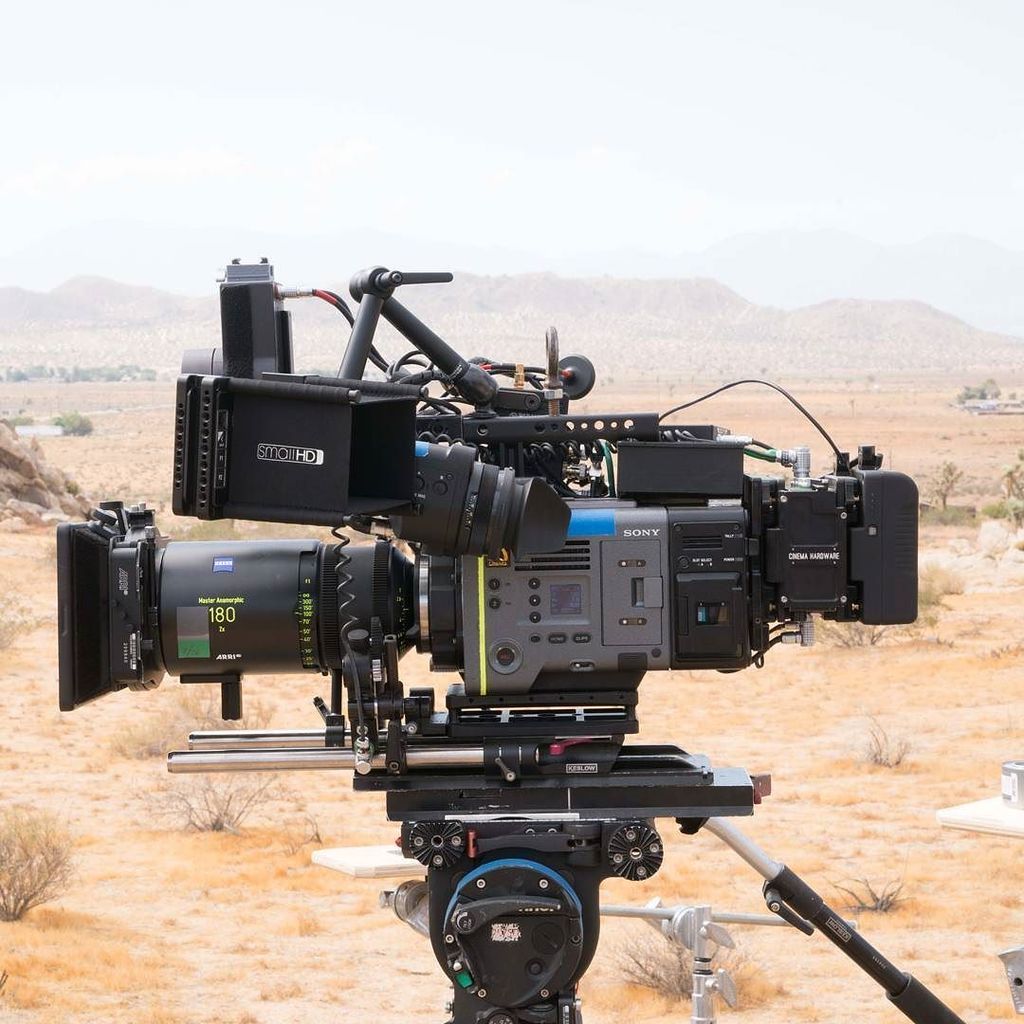Director Joseph Kosinski, Cinematographer Claudio Miranda, ASC, Show First Short Film
At the Digital Motion Picture Center on Stage 7 at the Sony Pictures lots in Culver City, Sony marketing and production manager for media solutions and production technology Peter Crithary introduced the new full-frame Venice camera.
“We went back to the drawing board and had to reconsider what to bring to the market to benefit filmmakers,” he said. “What we built was based on considerable feedback from many filmmakers.”
The result is the lens-agnostic, aspect ratio-agnostic Venice. “You’re no longer restricted to Super 35mm,” he said. “The sensor, the color science, the dynamic range were specially designed from the ground up.”
With a suggested list price of $42,000, the Venice will ship in February 2018. [See our coverage of yesterday’s announcement for more tech details.]
Can You ‘Dig’ It?
Sony promotional video
In addition to introducing the Venice, the event also premiered the short film “The Dig,” shot in anamorphic 4K, directed by Joseph Kosinski and photographed by cinematographer Claudio Miranda, ASC. “Dig” was a proof of concept for Venice, to test the camera’s features and architecture in different environments and lighting conditions.
According to Crithary, Miranda was one of the cinematographers who had input into how the Sony Venice was designed. He wanted the ND filters in the camera, and the Venice sports an integrated 8-step mechanical ND Filter system with ND values from 0.3 to 2.4 and two ND wheels, with remote controllable servo. “Nobody has done that in a motion picture camera before, but we pulled it off,” said Crithary.
Miranda notes that, “it makes sense” to have the ND filters in the camera. “If you’re in a helicopter, you don’t have to land and change NDs,” he said. “You can just swap out the ND completely – same thing with a drone.”
Miranda tested it out on “Dig,” concerned there might be aberrations. In one shot, the camera looks at the sun. “I shot at 2.4, the heaviest, and I didn’t see any color shift or IR pollution,” said Miranda.
The Venice also offers a user-interchangeable sensor block. Although alternative sensors designed for specific purposes, such as high frame rate, haven’t yet been created, Venice’s architecture plans for this eventuality. “You can change it with four screws,” said Crithary. “You don’t need a clean room or to send it to a service center. You can do it in the field. That took time and engineering resources to develop.”
Miranda said he was also focused on build quality. “It was important to me that the camera feels solid,” he said. “That you can push it off a desk and it’ll survive.” Crithary said that build quality was also a top priority for Sony; with a magnesium chassis, he said, the Venice is built like a tank.
“Dig,” which was shot in the southern California desert, tested the camera in a variety of environmental and weather conditions, including intense heat. Crithary noted that the camera’s cooling system was also completely redesigned. “The smaller the size of the camera body, the more challenging it is to keep cool in hot conditions,” he said. “The cooling system is detached from the electronics, so it’s very practical. You can swap out the fan.”
Crithary said a lot of attention was paid to redoing the color science, for more pleasing images, especially for skin tone. Miranda approved of the results. “[Skin tones] don’t roll off artificially in the shadow detail or chromatize artificially,” he said. “Joe [Kosinski] and I really appreciated that.
Miranda said he used three prototype cameras outfitted with ARRI Master Anamorphics in the Lancaster location. “It was nice to shoot full-frame,” he said. “We ended up in 2.66:1 because we loved the whole landscape. Again, skin tones and color didn’t feel artificial or pushed and didn’t dive into red in low light. To play with depth of field on the fly was also really great.”
On set, said Crithary, the Sony team learned that boot time from turned-off to powered-up is five seconds.
Workflow for the Venice shouldn’t be an issue, since there are already established paths for the existing formats. Colorfront chief technology officer Bill Feightner reported that the company’s long-standing relationship with Sony meant Colorfront was able to download the Venice SDK and use Transkoder on “Dig.” “We can flawlessly make a perfect image from the camera,” he said. “You just plug the camera in and it works.”
Colorist Mike Sowa at Technicolor graded the short.
Reading the Room

The Sony Venice debuted at a presentation with “The Dig” writer/director Joseph Kosinski and cinematographer Claudio Miranda, ASC
Sony
Most of the Hollywood industry people in attendance saw the camera for the first time at the screening. The few who were able to put their hands on it prior to the event liked what they saw.
“This is Sony’s affirmation of their commitment to the full-frame format, which we saw in their still camera line with the Alpha 7 series,” said cinematographer Jon Fauer, ASC. “This is a major step forward in full-frame cinematography and should also reassure all the lens companies that have been daring and bold to come out with full-frame lenses without many cameras. Sony is joining the movement towards full-frame, which many of us see as the future of high-end cinematography.”
